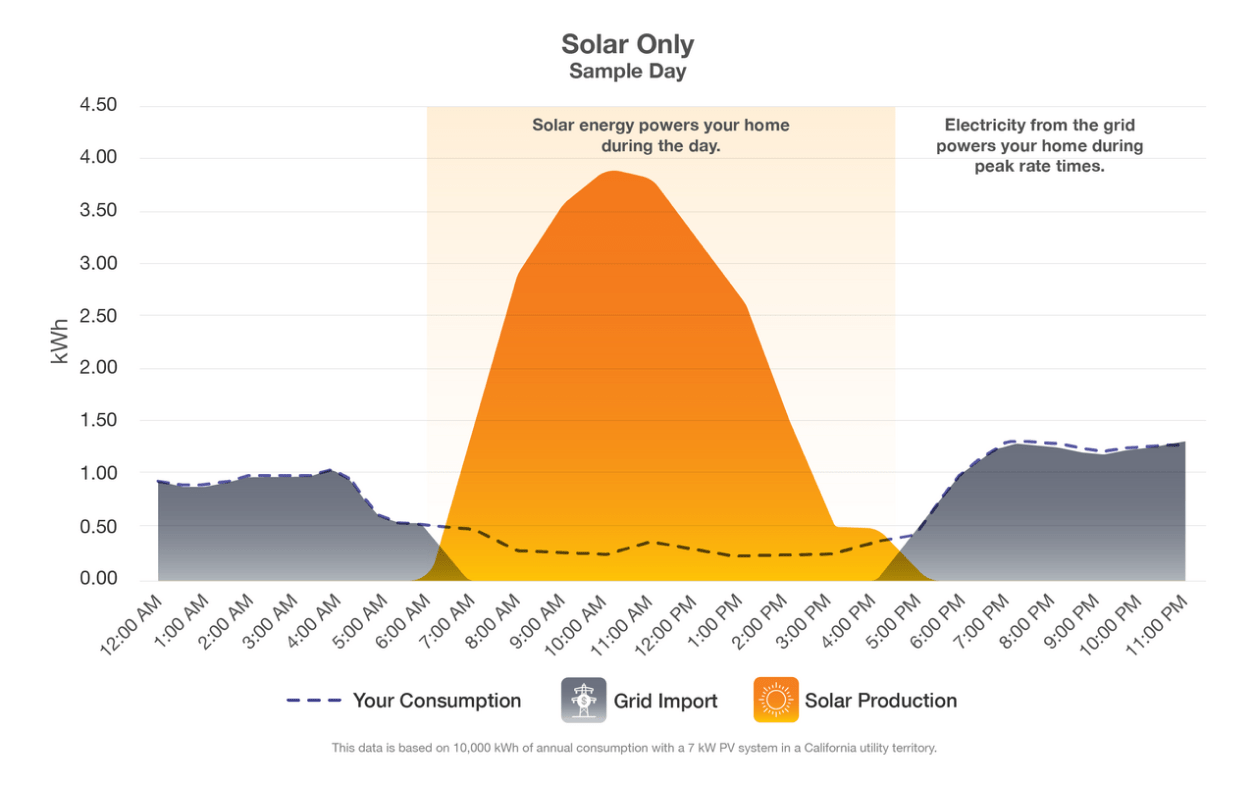

From groceries to gasoline, Golden State residents pay more for necessities than most other places. While ratepayers are used to high utility prices, the cost of electricity in California has skyrocketed in recent years — and shows no signs of slowing.
If you’re one of the 5.5 million PG&E electric customers, your electricity just became the most expensive in the state. In early 2024, America’s largest investor-owned utility (IOU) increased its rates by 20%, tacking on an additional $35 a month ($400+ per year) for the average household.*
Until this year, San Diego Gas & Electric (SDG&E) was the reigning champ of grueling electricity bills. But with PG&E more than doubling its rates in the past decade, the behemoth utility — ranked last in customer satisfaction surveys — now wears that crown.
Here’s how the price of electricity per kWh in California has changed in recent years:
Increases in Average Residential Rates
| Company | Rate ($ per kWh) |
3-Year Change Jan 2021 to Jan 2024 |
10-Year Change Jan 2021 to Jan 2024 |
 |
$0.396 | 63% |
127% |
 |
$0.334 | 52% |
91% |
 |
$0.362 | 13% |
72% |
*SDG&E rates fell 16% from January 2023 due to many factors such as one-time refunds from overcollections. Rates expected to rebound by the end of 2024.Utility rates represent averages excluding the California Climate Credit. Source: The Public Advocates Office.
What’s the Average Electric Bill in California?

From tiny homes to mega mansions, California dwellings run the gamut. Even if you live in a tract housing development and your home replicates your neighbor’s, your electric bills could differ vastly.

The average electric bill in California depends on factors such as:
- Your utility company and the rate plan you’re on
- The size and type of your home (is it old and drafty or energy efficient?)
- Your household consumption patterns
- The appliances you have (all-electric appliances use more than gas)
For the millions of residents served by the big utilities, the average California electric bill can range from $150 to a thousand or more, depending on how many kilowatt-hours (kWh) of electricity you draw from the grid. Using the rates above, let’s look at different monthly consumption patterns to get an idea of what your household may be charged for electricity.*
For perspective, the average 1,500-square-foot home in California uses between 700 and 1,500 kWh of electricity each month.
| Monthly electricity consumption |
SCE [$0.362] |
SDG&E [$0.334] |
PG&E [$0.396] |
| 500 kWh | $181 | $167 | $198 |
| 1,000 kWh | $362 | $334 | $390 |
| 1,500 kWh | $543 | $500 | $594 |
| 2,000 kWh | $724 | $668 | $792 |
| 2,500 kWh | $905 | $835 | $990 |
Remember, this only accounts for electricity usage and doesn’t include delivery charges, CCA costs, fixed charges, on-peak rates, municipal surcharges, etc.
Why is Electricity so Expensive in California?
By now, we all know electricity is expensive in California — but why? In truth, there’s no single factor to blame. It’s a mix of different circumstances:
- Pressure to achieve the state’s climate action goals
- The obligation for IOUs to generate profits for investors
- Rising commodity prices
- Increased wildfire mitigation costs
- Investments for transmission and distribution
- The escalating price of natural gas

While many agree on why electricity rates have risen, there’s little agreement on proposed solutions. The utilities’ controversial plan to base electric bills on customer income is facing opposition from some lawmakers, energy economists and clean energy groups.
Regardless of the outcome, one thing’s certain — living in America’s most populous state isn’t getting any cheaper. So, what can be done to ease the financial stress of rising electricity rates in California? Many homeowners are turning to solar and solar plus battery storage to find relief.
As a homeowner, you can only control what happens on your property. By creating your own source of energy right from your rooftop, you can reduce your dependence on your utility company for years to come.
How to Lock in Your Cost of Electricity with Solar

With electricity prices expected to continue upward for years to come, the best way to protect yourself is to reduce the number of kilowatt-hours you draw from the power grid. When you install residential solar in California, you’re harnessing the sun’s energy and converting it into power you can use at home. Therefore, the costs you avoid are actually the costs of grid electricity that your solar panels replace.
When you invest in a rooftop solar system, you’ll still get a bill from your utility for things like service charges and taxes. You’ll also pay for any electricity you draw from the grid, which should be significantly lower (depending on how much usage you offset with solar).
You’ll also receive a bill from your solar service provider to pay for your system. If you’re a Sunnova solar customer, you’ll receive a monthly bill that covers your solar lease, loan/financing agreement or power purchase agreement (PPA). This amount will be agreed upon before your system is installed, so you’ll have a clear understanding of what you’ll pay for up to 25 years.
Therefore, as California electricity rates continue to soar, you can lock in a predictable monthly solar bill, and enjoy much less exposure to uncontrollable utility rates.
Add Battery Storage to Maximize Your Bill Savings

As a homeowner, you can further reduce your reliance on the grid by adding battery backup. A battery lets you store the excess solar your panels generate and use it later on: at night, during an outage, or when utility rates are highest.
California’s net metering program requires IOUs to credit solar customers for any excess energy your panels produce and feed to the grid. These export credits appear on your electric bill and reduce the total amount you owe for grid electricity.
While net metering credits in California have been historically attractive, a new version of net metering — NEM 3.0 — went into effect in April of 2023. The new solar billing policy reduces the value of export credits by around 75% and creates a stronger case for self-consumption.
So, if you want to see the greatest return on your solar investment, the trick is to use as much of your own solar as possible. The energy you generate is now much more valuable for your household to consume than it is to export. With a battery, you can store your power, use it when utility rates are high, and then send it to the grid when credit rates are more appealing.
Learn more about maximizing your solar under NEM 3.0.
Why Storage Helps in Areas with Time-of-Use Rates
A solar battery can be a powerful savings tool if you live in an area subject to time-based rates, meaning electricity prices vary based on season, time of day and day type (weekend or weekday). Many California utilities implement time-of-use (TOU) rates, charging more for electricity when demand is high (typically 4-9 pm). The move incentivizes customers to shift consumption patterns and alleviate strain on the grid during high-stress periods.
With solar and battery storage, you don’t have to change your behavior to avoid TOU windows. Using your stored solar power when rates are the highest, you can continue cooking, doing laundry, running workout equipment, etc., in the evening without paying on-peak rates.
How Much Can I Save with Residential Solar in California?
You might wonder exactly how much you can save with solar in California. While the answer varies for each household — depending on electricity use, system size, and consumption habits — the Sunnova team sheds light on what the average PG&E customer could save with solar and solar plus storage.*

A home without solar
Without solar, the average PG&E customer can expect to pay between $150 and $350 per month, depending on usage. As the price of electricity increases, PG&E ratepayers could wind up paying more than $166,300 for electricity over 25 years, according to industry estimates.*

A home with solar
By going solar with Sunnova, you can have greater over your costs control by locking in the price of energy you generate through a fixed solar rate. Depending on what financing option you choose, you can pay the same monthly payment each year or opt for an escalator.
A Sunnova solar customer who installs the average 7kW system can save between 30% and 35% on PG&E electricity in the first year alone. The cost of electricity from the grid in California’s largest utility territory is expected to increase by 150% over 25 years. By installing solar panels, even with the escalator, our customers are projected to save about 24% over the cost of PG&E electricity throughout 25 years.


A home with solar and battery storage
If you choose to store the energy your panels produce with a solar battery, your monthly payment will be higher (as it accounts for the additional equipment). Therefore, your projected savings will be more gradual, but will likely result in a greater return.
A Sunnova customer who installs solar panels and a battery can save an estimated 18.7% over the average PG&E bill in the first year, and almost 30% in the first decade. At the 25-year mark, you may save more than 42% over your PG&E bill.

Is Going Solar Still Worth it in California?
So, is solar worth it in California? If locking in your monthly energy costs for the long-term sounds more appealing than wincing each time you open your electric bill, then solar panels are worth the investment. With NEM 3.0, you’ll break even on your investment sooner when you include battery storage, since the value of solar exported to the grid has become so low.
As shown above with electricity price trends, the sooner you adopt clean energy at home, the sooner you can recoup your system costs and no longer be at the mercy of additional increases. And if you buy your system outright or finance your system with a loan, you may qualify for the 30% federal tax credit, plus any state and local solar rebates.
By opting for solar or solar with storage today, you can protect yourself from rising rates tomorrow — and for the foreseeable future.
Ready to make the California sunshine work for you?
Sunnova Customer Stories
Hear Sunnova reviews from customers, in their own words, about their experience with Sunnova SunSafe® home solar and battery storage. For more information on Sunnova and the home energy services we offer, visit https://www.sunnova.com.

